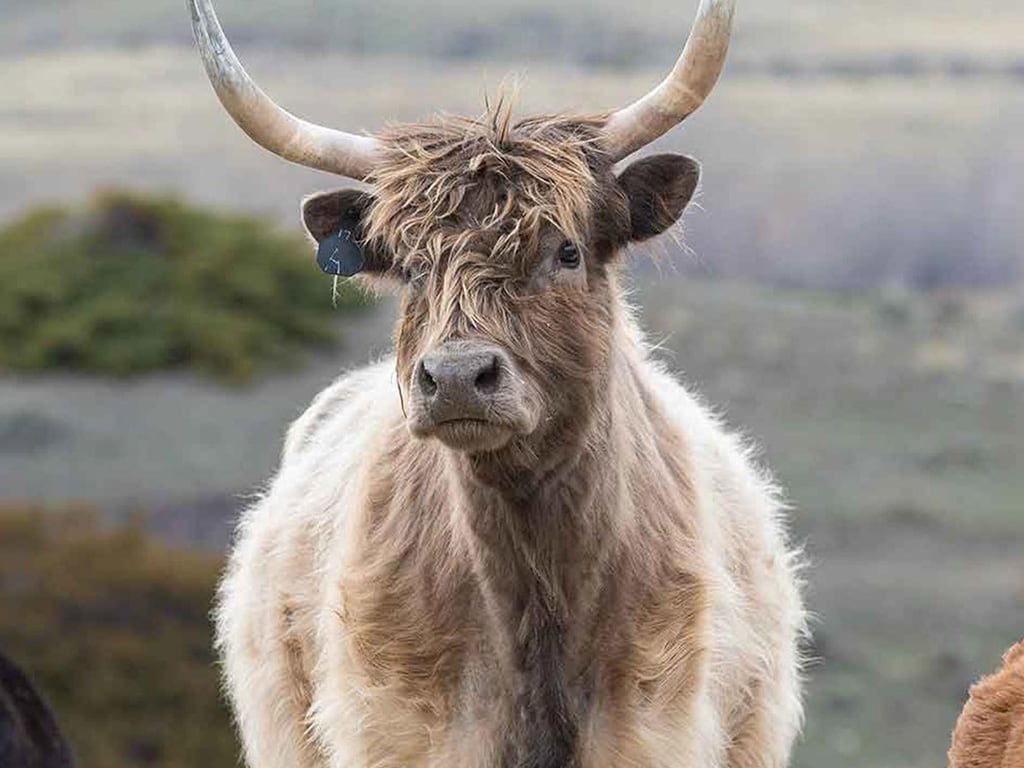Agriculture, Livestock/Poultry September 01, 2023
Tiny Cows, Big Business
.
Mini cows can be a commercial success.
Return on investment made mini cows a big draw for Montana small-acreage ranchers Matt and Kaylee Kleinsasser. Calves from their 27-head herd of Highland and other small-framed cows bred to Chondro bulls bring in the equivalent of a 120-head standard calf crop. Even better, they do it browsing just 240 acres of rough, rocky pasture in the foothills of the Crazy Mountains. It would take an acreage at least five times that to make the same income with a traditional herd.
Chondrodysplasia is the cattle dwarfism gene.
When the gene is expressed, the perfect pint-sized (and prized judging by the thriving market) pasture pet is produced. Beyond being cute as a button, they're cheaper to feed and easier to handle than their full-size peers.
"Our waiting list is two years out at this point," Kaylee says. The calves are paired with a buyer practically before they take their first steps.
Seeing this demand is what led the Kleinsassers to develop a breeding herd. Kaylee, a pharmacist, and Matt, a school principal at the time, were mini cow customers first. Kaylee grew up on a cattle ranch and wanted her daughters to experience livestock.
Selling calves from their two hobby mini cows was enlightening. They saw it could generate a significant income, giving Matt the option to retire from education. He's found he truly enjoys livestock.
"It's completely different from what I did before. The genetics are interesting and I don't have to deal with people—Kaylee handles the marketing," Matt says.
They gradually curated a 27-head cow herd with four Chondro bulls. A mix of breeds are used, but Highlands are the base.
"A standard Highland cow is already a mid-sized mini. We select small-framed cows and breed them to Chondro bulls. The goal is to get mini and micro mini calves with a lot of hair," Kaylee says.
Small cows bred to Chondro bulls yield mini (36 inches to 42 inches tall) and sometimes micro mini (under 36 inches) calves. The smaller the calf, the higher the price. A mini can bring $4,500-$7,500. A micro mini can fetch more than $10,000.
"We're possibly the only cattle producers in the state of Montana that don't care about rate of gain. Less is more," Matt says.
Above. Matt and Kaylee Kleinsasser raise mini cattle near Big Timber, Mont., with their daughters Greeley (13) and Izzy (10). Merle, a mini Highland bull, is the up and coming Two Cow Mini Cattle herd sire. Jellybean, born on Easter, is their smallest calf yet. A Chondro micro mini, she weighed only 20 pounds and was 18-inches tall at birth.
Small differences. Production is largely the same as standard cattle. Calving and cattle handling are easier, but breeding and marketing require extra care.
The Kleinsassers are adamant about choosing cattle with good conformation and a lot of vigor. They aren't taking genetic anomalies from standard herds, they're selecting specific genetics and crossing them strategically.
They opt not to cross Chondro bulls with Chondro cows (some breeders do) as there's a 25% chance of producing a nonviable calf. Since Highland cows are already small without having dwarfism, even non-Chondro calves can be marketed as minis.
Customer education is critical. Kaylee answers a lot of questions and asks a few of her own.
"Is the pasture fenced? Do they have a vet? Can they transport the animal? These are things buyers don't always consider," she says. Calves are marketed through social media. They could potentially make way more with online auctions, but they like the personal touch. "I want to make sure these calves are going to good homes." ‡
Read More

AGRICULTURE, FARM OPERATION
Test Results
Relentless pursuit of knowledge fuels Rendel Farms.

AGRICULTURE, LIVESTOCK/POULTRY
Water Buffalo Mozzarella
Quebec dairy milks water buffalo to supply niche market.



